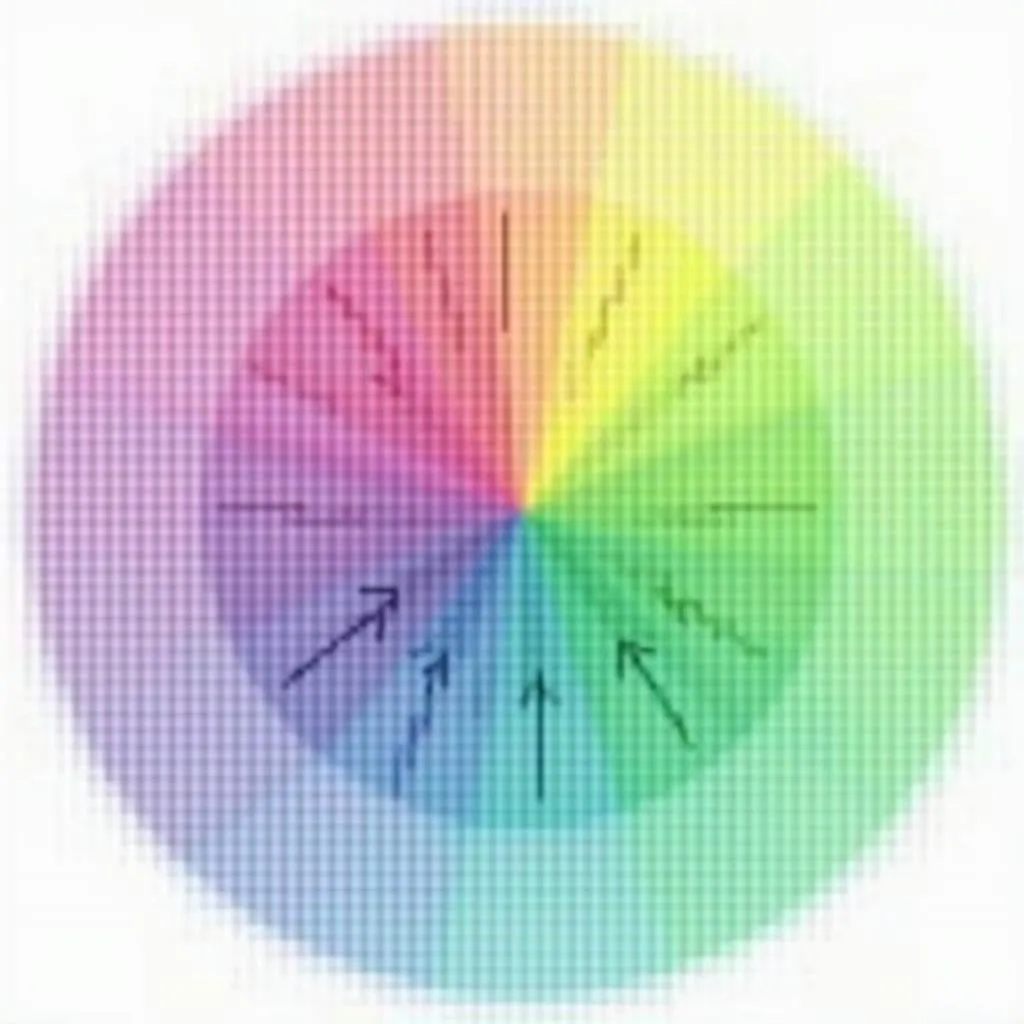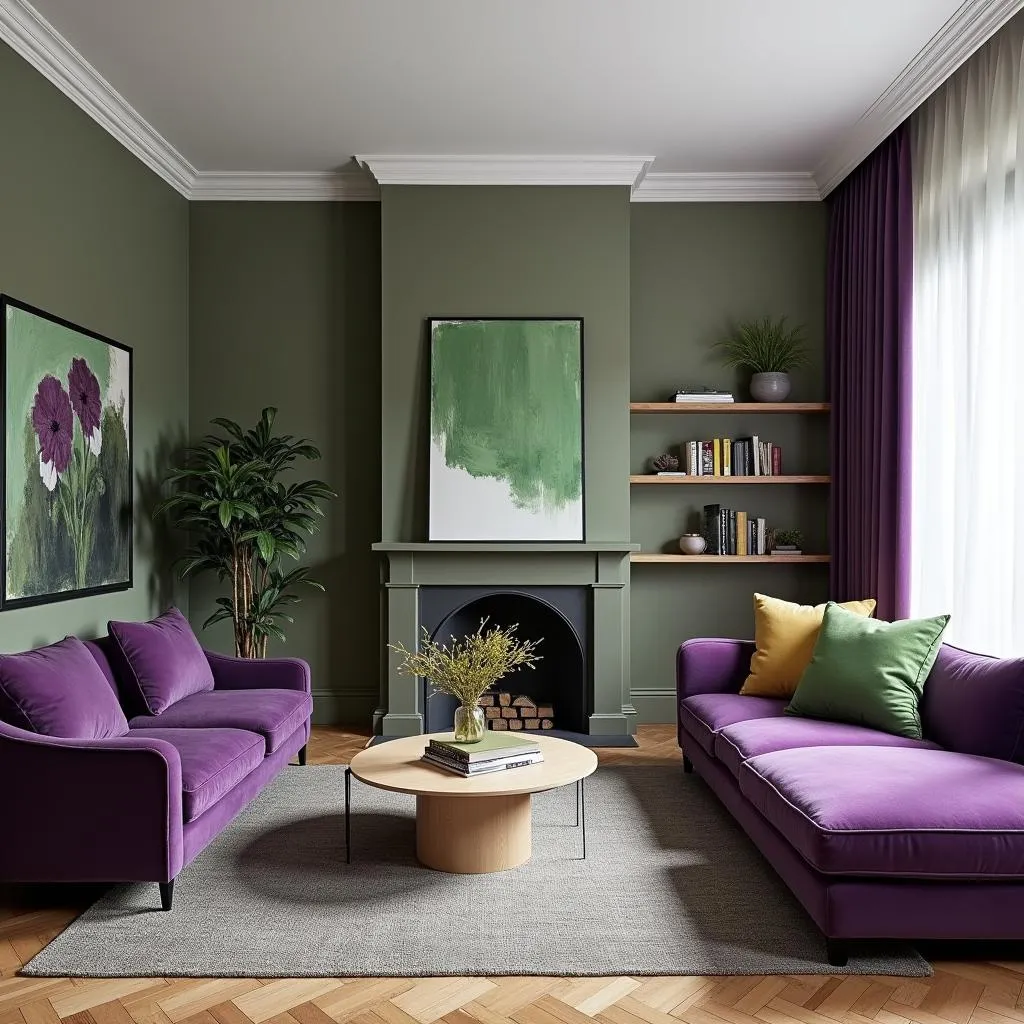Purple and green are often seen together in nature, think of lavender fields against lush foliage or a delicate orchid blossom against a vibrant green stem. This pairing raises the question: are purple and green complementary colors? The answer is a resounding yes! Let’s delve into the fascinating world of color theory to understand why.
Understanding the Color Wheel
The concept of complementary colors is best understood through the color wheel, a visual representation of color relationships. This circular arrangement places colors across from each other based on their contrasting hues.
- Primary Colors: The color wheel begins with the primary colors: red, yellow, and blue. These are the foundation, the hues from which all other colors are derived.
- Secondary Colors: Mixing any two primary colors in equal parts creates a secondary color. Green (blue + yellow), orange (red + yellow), and purple (red + blue) make up this second tier.
- Tertiary Colors: Tertiary colors result from mixing a primary color with an adjacent secondary color, leading to shades like yellow-green, blue-green, blue-violet, and so on.
The Magic of Complementary Colors
Complementary colors sit directly opposite each other on the color wheel. This opposition creates a dynamic visual contrast that is naturally pleasing to the eye. When placed side-by-side, complementary colors enhance each other’s intensity, making each appear brighter and more vibrant.
Here’s why purple and green fit the bill:
- Purple is a secondary color created by mixing red and blue.
- Green is a secondary color formed by mixing blue and yellow.
Their positions on the color wheel make them a classic complementary pairing.
 Purple and Green on the Color Wheel
Purple and Green on the Color Wheel
The Impact of Purple and Green in Design
The complementary nature of purple and green makes them a powerful combination in various design applications:
Interior Design: Imagine a living room with lavender walls and emerald green accents in the throw pillows and artwork. Or picture a kitchen with deep violet cabinets contrasted by lively lime green bar stools. The effect is both harmonious and energizing.
Fashion: A deep purple dress can be beautifully accented with emerald green jewelry, while a green shirt can pop with a purple scarf or tie.
Graphic Design: Using purple and green in logos, website designs, and marketing materials can create visually appealing contrasts that capture attention.
 Purple and Green Living Room
Purple and Green Living Room
Tips for Using Purple and Green
While purple and green naturally complement each other, here are some tips to maximize their impact:
- Vary the Shades and Tints: Don’t be afraid to experiment with different shades of purple and green. A light lavender paired with a deep forest green can create a sophisticated and elegant look, while a vibrant violet with a bright lime green brings a playful and energetic vibe.
- Balance is Key: While these colors work wonders together, it’s important to use them in a balanced way. One color can be dominant, while the other acts as an accent. Too much of either can overwhelm the space or design.
- Consider the Mood: Purple and green can evoke different moods depending on the shades chosen. Lighter shades tend to create a calming and serene atmosphere, while darker, richer tones can feel more luxurious and dramatic.
“When working with complementary colors like purple and green, the key is to find the perfect balance,” says renowned interior designer, Anya Sharma. “Think of it like a dance—one color leads, while the other follows, creating a rhythm and flow that is visually captivating.”
Beyond the Basics: Exploring Color Temperature
While the color wheel provides a basic understanding, delving into color temperature adds another layer of complexity. Colors are often categorized as warm (reds, oranges, yellows) or cool (blues, greens, purples).
Interestingly, purple and green can straddle this line:
- Purple: Depending on the ratio of red and blue, purple can lean towards warm (more red) or cool (more blue).
- Green: Similarly, green can have warm undertones (more yellow) or cool undertones (more blue).
Understanding the temperature of your chosen shades allows for even more sophisticated and intentional color combinations.
 Purple and Green Color Palette
Purple and Green Color Palette
Conclusion
So, are purple and green complementary colors? Absolutely! Their contrasting hues, when combined thoughtfully, create visual harmony, vibrancy, and a captivating appeal. Whether you’re decorating your home, choosing an outfit, or designing a website, this classic color pairing offers endless possibilities for creative expression.
Remember, the world of color is yours to explore! Don’t be afraid to experiment, play with different shades, and find the combinations that speak to your unique style and vision.
FAQ
1. What other colors go well with purple and green?
While purple and green shine together, you can incorporate other colors like white, grey, silver, gold, or even a touch of pink for added depth and complexity.
2. Can I use purple and green in a minimalist design?
Absolutely! Opt for muted shades of lavender and sage green for a calming and minimalist aesthetic.
3. What if I’m not sure where to start with purple and green?
Start with small accents! Introduce a green plant into a purple-themed room or add a splash of purple accessories to a green sofa. Observe the interplay of these colors in your space and gradually incorporate more as you feel comfortable.
Need Help?
If you’re ready to transform your space with the magic of color, we’re here to help! Contact us at Phone Number: 0373298888, Email: [email protected] or visit us at 86 Cầu Giấy, Hà Nội. Our team of color experts is available 24/7 to provide personalized guidance and support.

